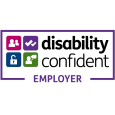
Scammers use emails, phone calls or text messages to trick you into giving them your personal information. But there are several things you can do to protect yourself.
It's easy to forget that something as simple as phishing emails exist and are causing big problems for people's security. Globally, over 319 billion e-mails were sent and received on a daily basis.
This includes billions of promotional e-mails sent by marketers and whilst many are generally harmless, around 3.4 billion phishing emails are sent out each day across the world.
What's a phishing scam?
In recent years, cyberattacks have been on the rise and are ever-rising still. One of the most common types of these is fake emails (and unsolicited text messages), aimed to grab your interest and have you click a link which then directs you to a spoofed website to steal your data (such as passwords and login details for corporate email accounts, or personal and financial details for your individual private email accounts.)
These are known as Phishing emails.
How to protect your inbox
Phishing is getting more sophisticated and difficult to spot, but there are a few ways to recognise possible phishing emails. Just ask yourself:
 |
|
How do I know if I’ve been a phishing victim?
- Check your bank account and credit card statements regularly. See if there are any transactions that you don’t recognise.
- Check your credit file frequently. Look for any financial accounts you don’t recognise or any unusual credit rejections.
What should I do if I’ve been a victim of phishing or other online scams?
- End all communication with the scammer immediately
- Contact your bank to report the issue
- Contact Action Fraud on 0300 123 2040 or online
- Contact Citizens Advice on 03454 040506
- Register with Cifas if you are concerned your identity details have been stolen








